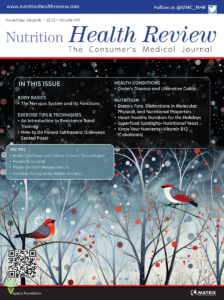
Endometriosis is a chronic gynecologic condition in which the tissue that lines the uterus grows in areas it should not, such as the fallopian tubes, ovaries, bowels, and bladder. All individuals who menstruate are at risk for developing this disease. Risk factors include starting periods before the age of 11 years, having monthly cycles that span less than 27 days, having heavy periods lasting more than seven days, and having a family member with endometriosis. There is a lower risk of developing endometriosis for individuals who have been pregnant before and those who have breastfed.1
Symptoms, Diagnosis, and Treatments
Endometriosis most commonly affects female individuals between the ages of 25 and 29 years.2 The abnormal tissue outside the uterus does not shed as normal endometrial tissue does during a menstrual cycle. The tissue thus becomes irritated, inflamed, and swollen, which can result in the development of scar tissue (adhesions).3 There is no known cause of endometriosis. Symptoms include pelvic pain, infertility, painful cramps, abdominal pain, pain during intercourse, heavy periods, bleeding between periods, and fatigue.1
The only way to definitively diagnose endometriosis is with surgery (typically a laparoscopy), although a pelvic exam and imaging tests may also be part of the diagnostic process.1 There is no cure for endometriosis.1 Treatments include over the counter pain relievers, such as nonsteroidal anti-inflammatory drugs, Other treatment options include combined hormonal contraceptives, progestin therapy, and gonadotropin-releasing hormone analogs.2
Surgery to remove the lesions and adhesions can help relieve pain and potentially improve fertility in cases of superficial disease where medication is ineffective or contraindicated.2 Following surgery, some individuals may experience disease recurrence; recurring lesions might stem from residual lesions or de novo cells that come through retrograde bleeding,4 which occurs when menstrual blood flows backward into the abdomen instead of out through the vagina.5
Living with Endometriosis
Endometriotic tissue scarring can interfere with the movement of eggs from the ovaries and through the fallopian tubes. Furthermore, endometriosis can damage sperm and fertilized eggs before implanting in the uterus.6 Individuals with endometriosis are more at risk for miscarriages and ectopic pregnancies.2
It is recommended that individuals with endometriosis avoid the use of alcohol and tobacco products to prevent worsening inflammation and pain. Consuming large amounts of red and cured meats, whole-milk dairy products, eggs, and sugars can contribute to an excess of estrogen and an increase in inflammation. Healthy foods that are recommended for individuals with endometriosis include vegetables, whole grains, and nuts.7
Sources
- Medline Plus. National Library of Medicine (US). Endometriosis. Updated 12 Dec 2023. Accessed 10 Jul 2024. https://medlineplus.gov/endometriosis.html
- Tsamantioti ES, Mahdy H. Endometriosis. Updated 23 Jan 2023. In: StatPearls. Treasure Island (FL): StatPearls Publishing; 2024 Jan-. https://www.ncbi.nlm.nih.gov/books/NBK567777/
- The American College of Obstetricians and Gynecologists. Endometriosis. Accessed 10 Jul 2024. https://www.acog.org/womens-health/faqs/endometriosis
- Selçuk I, Bozdağ G. Recurrence of endometriosis; risk factors, mechanisms and biomarkers; review of the literature. J Turk Ger Gynecol Assoc. 2013;14(2):98–103.
- Cleveland Clinic. Retrograde menstruation. Reviewed 10 Nov 2022. Accessed 10 Jul 2024. https://my.clevelandclinic.org/health/diseases/24432-retrograde-menstruation
- Johns Hopkins Medicine. Endometriosis. Accessed 22 Jul 2024. https://www.hopkinsmedicine.org/health/conditions-and-diseases/endometriosis
- Clínic Barcelona. Living with endometriosis. Updated 20 Feb 2018. Accessed 10 Jul 2024. https://www.clinicbarcelona.org/en/assistance/diseases/endometriosis/living-with-the-disease





